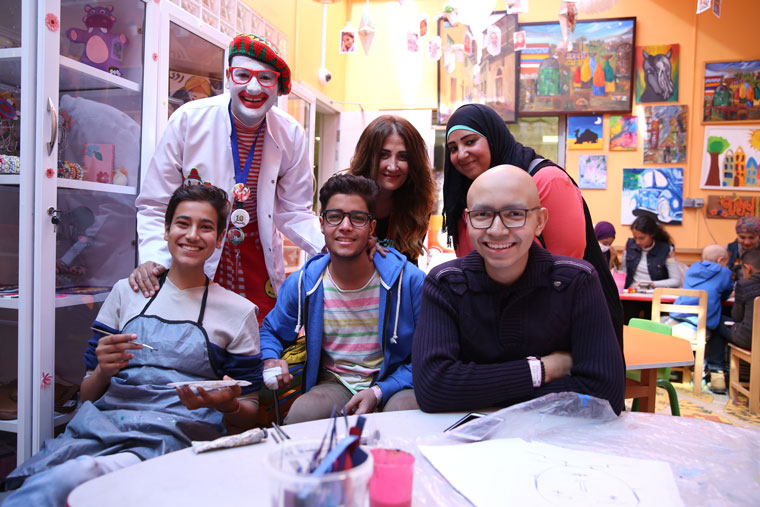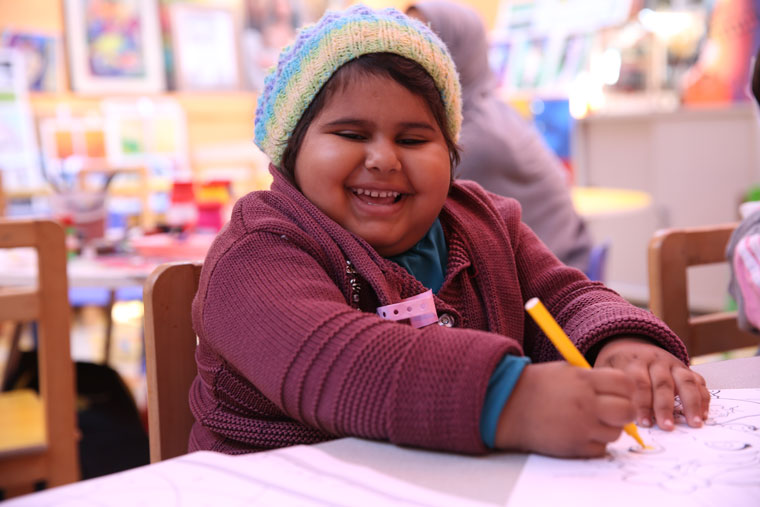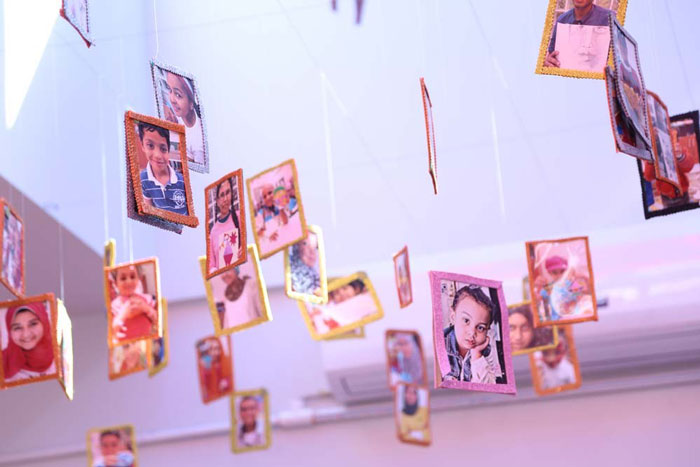Recreation Therapy Center

Overview
- It all started with volunteers, including two painters studying art therapy. The volunteers visited the children in their rooms or held drawing and crafts activities in the Hospital’s library. Our children loved the activities as they allowed them to convert their stresses into artworks. They used to go to the library asking about the activities, pushing the volunteers to set fixed times. The volunteers were eager to be part of our children’s treatment by contributing to reducing their anxieties and converting their anger to art activities, indirectly changing their behavior. Art therapy positively impacted the children’s immunity, response to medication, and social life. Setting regular hours for the art activities allowed the volunteer group to discover talented children. They decided to participate in art exhibitions and contests to show talented children’s work. The outcome of the exhibitions was used to fund the activities.
- In 2015, as the volunteers found a room that was not used, they used it to gather children and have them involved in the activities. The Hospital’s management was surprised to see the unused room decorated and used for art activities. They also noticed the positive effect of the activities on children. Being keen to offer children all means of medical and moral support to reduce their suffering, the Hospital management decided to establish a reactive therapy center operated by the volunteer group.
- In 2016, the management moved the reactive therapy center to a bigger room to engage more children in the activities. The department, which includes 20 volunteers, receives up to 60 children a day and is still self-sufficient materially, depending on the funds they receive from exhibitions. Currently, many talented children present their work in public exhibitions, have their paintings and artworks sold, and use the income to fund the workshop activities.
- Participation in exhibitions draws professional artists’ attention to the department and talented children. They visit the department occasionally and help them by giving advice and donating to the department.
- Working according to scientific rules, the workshop workers categorized the children according to age. For children under the age of five, they engage them in activities that suit their age, through which they aim to win their trust gradually, as they set a rule to have the child enter the workshop without the parents. This way, children learn to express their feelings through artworks. For older children, besides having them share in activities that suit their ages, they used to go out for trips and camps.
- The recreation therapy center work team pays special attention to children with brain or bone tumors, as children with solid tumors are often exposed to a sort of motion or sensory disability after the surgery. Being involved in art therapy may act like physiotherapy through training children to use their hands to do artwork. This way, the art workshop offers the child the chance to convert his suffering into artwork and retrieve his self-confidence.
For more information
Visit rtc.57357.org


